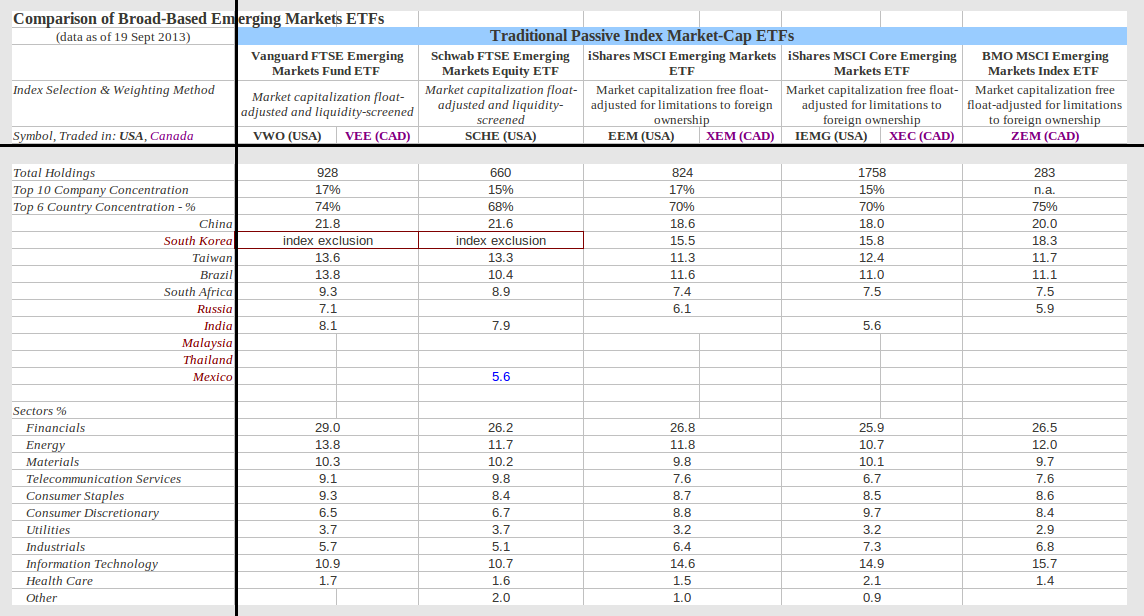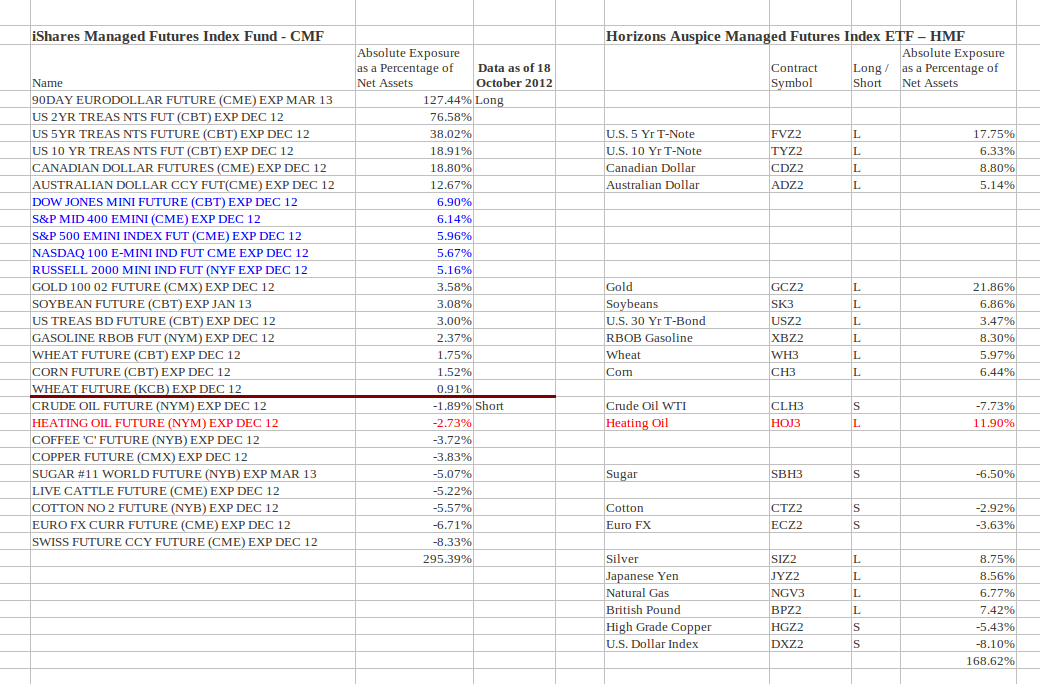HowtoInvestOnline Pros and Cons of Managed Futures ETFs
Post on: 11 Июнь, 2015 No Comment

Pros and Cons of Managed Futures ETFs
What’s not to like about an investment that delivers returns like the dark blue in the chart below taken from Frequently Asked Questions About Managed Futures at the CME Group website? Through thick and thin of the last 30 years, the dark blue line has gone ever upward with downward blips that are almost imperceptible compared to the 2001 Dotcom bubble crash and the 2088 Credit crisis.
The Barclay CTA Index line in the above chart represents an average of tracked results of Commodity Trading Advisors, professional investors who carry out Managed Futures strategies. Until recently such strategies have been the exclusive domain of large institutional investors such as pension funds and hedge funds.
In the past year or so, the expanding ETF industry has latched onto the idea to launch several Managed Futures ETFs, first in 2011 in the USA and then this year in Canada — the iShares Managed Futures Index Fund (TSX: CMF) and the Horizons Auspice Managed Futures Index ETF (TSX: HMF).
What are Managed Futures?
Managed Futures use futures contracts traded on exchanges such as the CME, NYNEX and others to build portfolios with exposure to a diverse range of:
- agricultural commodities (e.g. grain, corn, soybeans, cotton),
- metals (e.g. gold, silver, copper),
- energy products (e.g. crude oil heating oil, gasoline and natural gas),
- currencies (e.g. the Canadian dollar, the US dollar, Japanese Yen, Euro) and
- interest rates (e.g. US Treasury 5-Year or 10-Year or 30-Year bonds)
The key feature of Managed Futures is their active management strategies, which generally (though not always as CME points out) follow price trends in the market. When prices are going up, the strategies invest long and if prices are going down, they sell short. Thus, a Managed Futures ETF’s holdings might be long crude oil futures one month and short the next. The overall portfolio will usually be a mix of long and short positions, as can be seen in our comparison table below of the two Canadian ETFs in the category. The aim is to make money whether markets are rising or falling, unlike traditional index ETFs that hold only long positions and make money when markets are good but lose in downward times.

Pros
- Non-correlated with mainstream equity and bond returns — A portfolio with various non-correlated types of assets can attain lower volatility and better returns as the following marketing chart from Horizons shows for the back-testing done on its new ETF’s index in combination with Canadian and US equity holdings. A different Managed Futures index, the popular Barclays BTOP 50 , shows similar low or negative correlation with equities and bonds in data spanning 1987 to 2011 (cited in Lintner Revisited: A Quantitative Analysis of Managed Futures in an Institutional Portfolio )
- Managed Futures have gone up especially when things are really bad in equities — Perhaps the most striking and attractive performance feature (see table below from the Lintner Revisited paper), at least in the past and through the index, is that the worst downward market quarters for equities were marked by upward moves in the Barclays BTOP 50!
Cons
- Past performance is not necessarily indicative of future results — This frequently encountered warning, which we conveniently copied right from the same Lintner paper, tells us to look closely at possible limitations. The table shows that in several bad equity quarters, the BTOP 50 also lost ground, albeit less. Every crisis is different. Some types of conditions are bad for trend followers — rapid price reversals, or the sudden onset of high volatility. The rules of thumb for the intuitive traders or the complicated mathematical formulas that detect the trends, may stop working. Most of the CTAs, and certainly the new ETFs, have based their investing rules on algorithms derived from past price movements that may not work in the future.
- Indices may be touting what worked and ignore what failed — Michael Zhuang of the Investment Fiduciary blog levels a couple of criticisms along those lines in Managed commodities can counter volatilityNOT . as does investment author William J. Bernstein in On Stuff .
- An Index is not investable and the ETF may not be able to track the Index — There are two problems. First, the indices we have cited are averages of many CTA strategies so an ETF cannot replicate what those averages show. And as we see in our comparison of HMF and CMF, different versions of trend following can produce dramatically different results. The second issue is that ETFs have costs (MER, trading, accounting, bid-ask spread, tracking error) which can severely undermine returns the investor actually receives. At times when markets don’t have strong trends, constantly reversing direction, there may be not much return to offset the costs, which don’t stop.
- Returns come in larger but infrequent lumps and may be years in waiting — The Lintner Revisited paper says an investor should expect strong returns only over periods of three years or more. Many may lose patience and bail out when seeing lack of gains over a couple of years.
The Canadian Managed Future ETFs
- Holdings — As we noted above, the two Canadian-traded ETFs have quite different portfolios. Less than half the holdings are the same. The iShares offering CMF includes a number of US equity futures while HMF has none. For one holding, heating oil, CMF is short, judging that the price trend is down, while HMF is long, detecting an upward trend. This illustrates again that strategies do not converge and obviously returns of the two ETFs will be quite apart as well.
- Results so far — It is thus not surprising to see this chart from Google Finance. CMF and HMF haven’t moved at all alike and neither is much like the TSX equity index either. Contrary to the intention that they should make money in good times and bad, both so far have lost value.
- Fund Costs — CMF and HMF are not cheap for ETFs, though they may be in comparison to managed futures hedge funds which typically charge 2% MER plus 20% of any returns over a target benchmark. Both CMF and HMF have a 0.95% base MER, on top of which the ETFs get charged a 0.45% fee to pay the counterparty which is involved in the actual implementation (a tricky swap structure described in the Investment Strategy section of each ETF’s Prospectus, which is available through Sedar’s search for investment page ). CMF also has an approximate 0.15% fee to pay for the hedging of returns back to the Canadian dollar. Its total fees are thus 1.55%, to which get added other return-reducing costs of unknown magnitude like trading commissions, index-licensing, legal and and accounting. HMF has the currency hedging too but does not state a cost for the service.
Bottom Line
Are these a must-have for every investor? It’s hard to say. The crisis countering performance is quite attractive and the world is surely not done with financial crises but the implementation results in actual products have not been proven.
Further Reading :
Disclaimer. this post is my opinion only and should not be construed as investment advice. Readers should be aware that the above comparisons are not an investment recommendation. They rest on other sources, whose accuracy is not guaranteed and the article may not interpret such results correctly. Do your homework before making any decisions and consider consulting a professional advisor.














